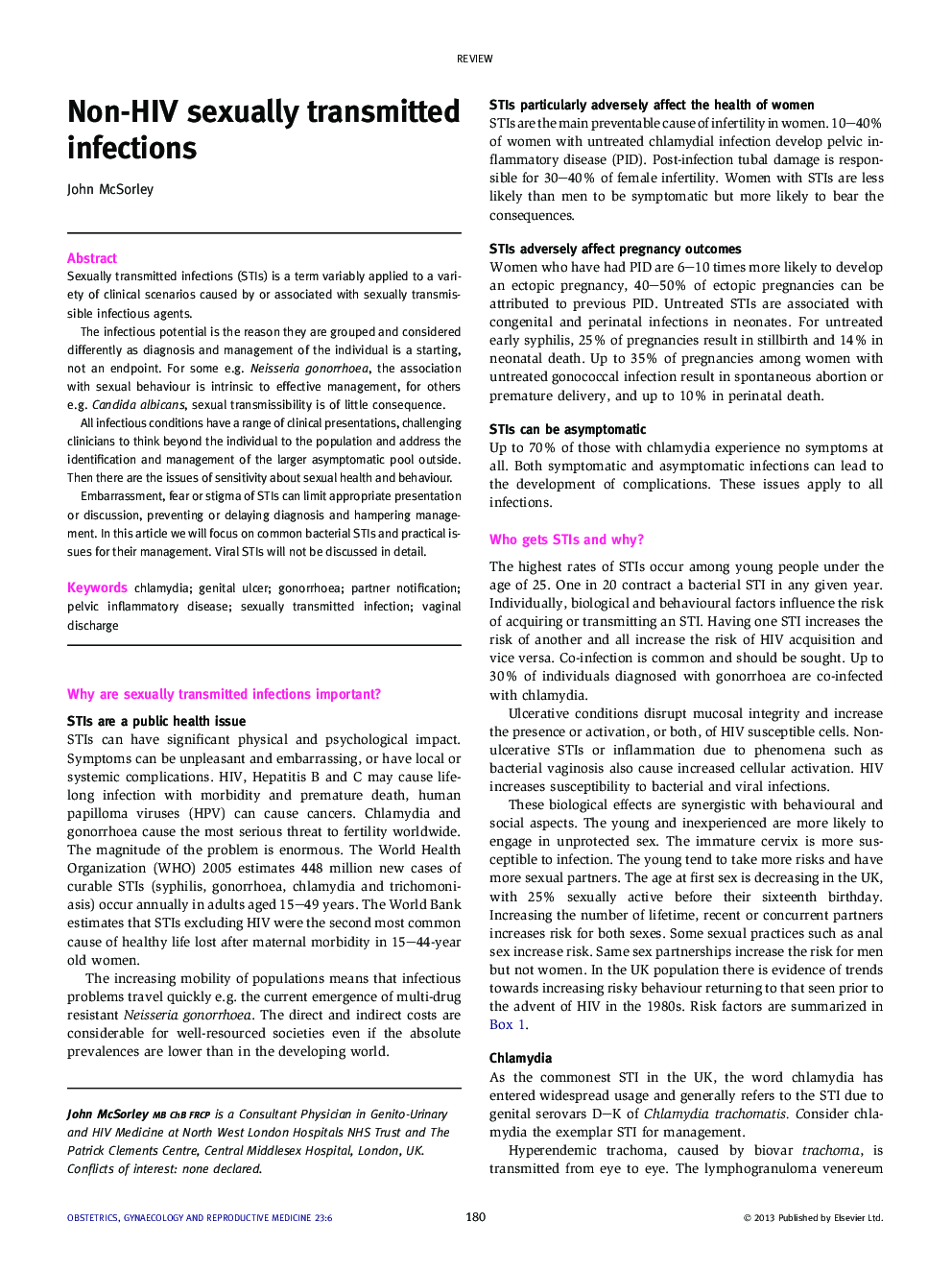| Article ID | Journal | Published Year | Pages | File Type |
|---|---|---|---|---|
| 3966895 | Obstetrics, Gynaecology & Reproductive Medicine | 2013 | 5 Pages |
Sexually transmitted infections (STIs) is a term variably applied to a variety of clinical scenarios caused by or associated with sexually transmissible infectious agents.The infectious potential is the reason they are grouped and considered differently as diagnosis and management of the individual is a starting, not an endpoint. For some e.g. Neisseria gonorrhoea, the association with sexual behaviour is intrinsic to effective management, for others e.g. Candida albicans, sexual transmissibility is of little consequence.All infectious conditions have a range of clinical presentations, challenging clinicians to think beyond the individual to the population and address the identification and management of the larger asymptomatic pool outside. Then there are the issues of sensitivity about sexual health and behaviour.Embarrassment, fear or stigma of STIs can limit appropriate presentation or discussion, preventing or delaying diagnosis and hampering management. In this article we will focus on common bacterial STIs and practical issues for their management. Viral STIs will not be discussed in detail.
